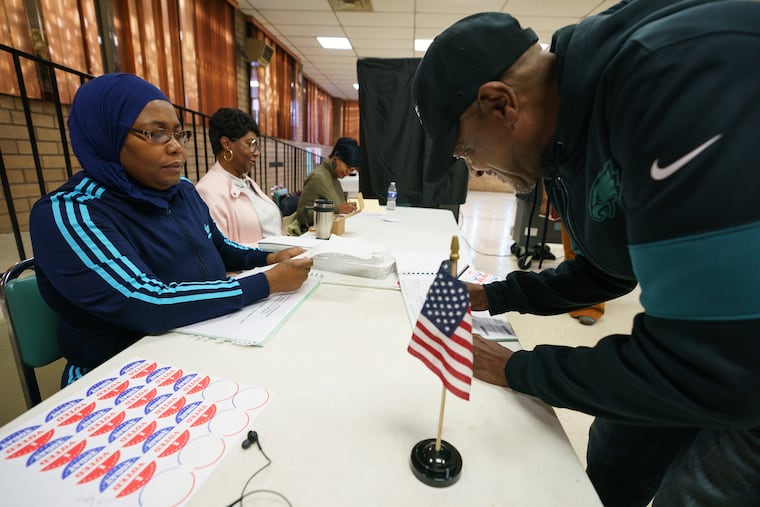Pennsylvania allows big reduction in poll workers for 2020 primary election to help counties during pandemic
Counties can cut in half the normal number of poll workers they'd need for the June 2 primary, the Pennsylvania Department of State says.

Pennsylvania’s county election officials are receiving some relief from state requirements.
Counties will be allowed to run the June 2 primary election with fewer than half the normal number of poll workers, the Pennsylvania Department of State said Wednesday evening, with a minimum of five workers per polling place regardless of how many precincts it serves.
That will help relieve pressure to fill poll-worker slots. While recruitment has been a challenge for years, the older average age of poll workers makes them vulnerable to the coronavirus. Across the state, counties have heard from poll workers scared to work the primary because of health risk. (State officials have even considered deploying the National Guard to serve as poll workers.)
“Poll worker recruitment is always hard, but it is especially hard when whole election boards are telling us that they will not be working due to COVID-19, like they are doing this election,” said Lisa Deeley, chair of the Philadelphia Board of City Commissioners, which normally has to recruit, train, and oversee thousands of poll workers. “Under these circumstances, every little bit that makes running election day easier is helpful.”
Emergency legislation passed in March allows counties to reduce the number of polling places by up to 60% without court approval, and the Department of State released guidance Wednesday evening allowing counties to also combine poll worker slots when it does so.
Having combined polling places isn’t unusual, especially in Philadelphia, which usually has around 830 polling places for 1,700 or so precincts. But each precinct is normally required to have its own election board, a group of at least five poll workers, no matter how many precincts are grouped together.
In normal times, about 8,500 poll workers would staff a Philadelphia election.
This year, the state guidance reads, counties should “temporarily provide for consolidated election boards, so long as all polling places have a balance of parties serving as minority and majority inspectors, a designated judge of elections, and sufficient staffing to effectively and fairly administer the election.”
That means 10 precincts combined into one polling place would require a minimum of just five elected poll workers, not the normal 50.
Counties have also struggled to find available buildings for polls, and many are using the emergency law allowing them to reduce polling places by up to 60%. Montgomery County, for example, will open just 140 locations instead of 352.
Allegheny County officials plan to have as few as 10% of its normal number of polling places.
Counties reducing by more than 60%require state approval of both their polling place and poll worker plans; all other counties will need to notify the state of their poll worker plans but do not need approval.
Counties will likely have more poll workers than the dramatically reduced minimum set by the state Wednesday. They still want as many as they can get because the more poll workers in place, the lower the chance of long lines of voters being bottlenecked at check-in or voting machines.
Still, officials acknowledged, tensions remain. Fewer poll workers means less recruitment and training are needed but increases the chances of voter lines. Similarly, fewer polling places reduces administrative troubles but increases the number of voters in each location, a public health risk.
Wednesday’s state guidance also encourages counties to move poll workers to different positions as needed and to eliminate overlapping duties.
The June 2 primary election is less than four weeks away.